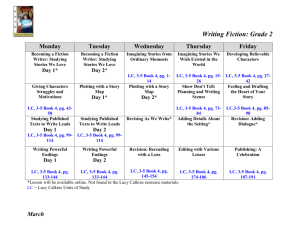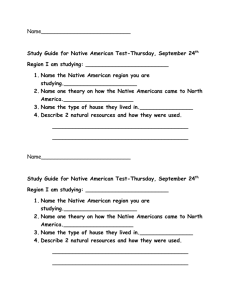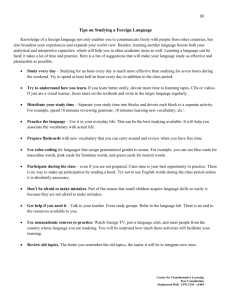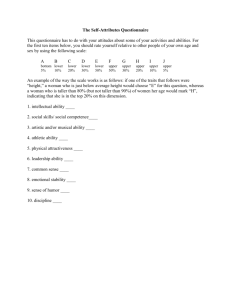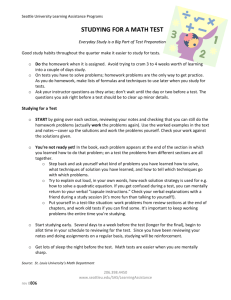What are Independent and Dependent Variables?
advertisement
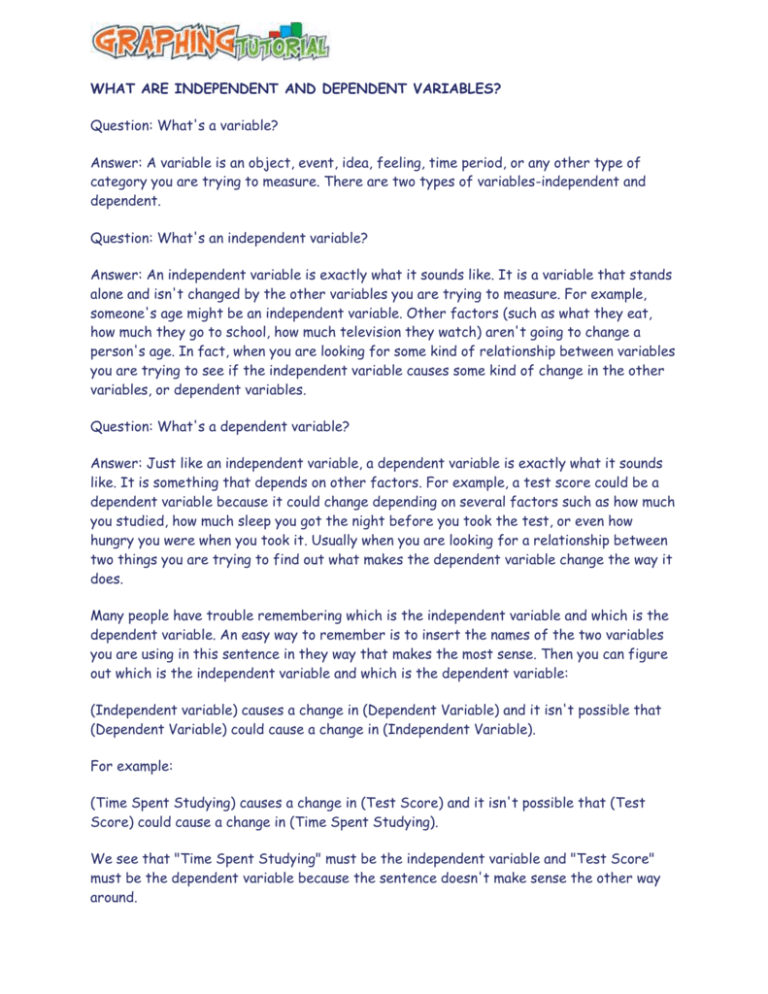
WHAT ARE INDEPENDENT AND DEPENDENT VARIABLES? Question: What's a variable? Answer: A variable is an object, event, idea, feeling, time period, or any other type of category you are trying to measure. There are two types of variables-independent and dependent. Question: What's an independent variable? Answer: An independent variable is exactly what it sounds like. It is a variable that stands alone and isn't changed by the other variables you are trying to measure. For example, someone's age might be an independent variable. Other factors (such as what they eat, how much they go to school, how much television they watch) aren't going to change a person's age. In fact, when you are looking for some kind of relationship between variables you are trying to see if the independent variable causes some kind of change in the other variables, or dependent variables. Question: What's a dependent variable? Answer: Just like an independent variable, a dependent variable is exactly what it sounds like. It is something that depends on other factors. For example, a test score could be a dependent variable because it could change depending on several factors such as how much you studied, how much sleep you got the night before you took the test, or even how hungry you were when you took it. Usually when you are looking for a relationship between two things you are trying to find out what makes the dependent variable change the way it does. Many people have trouble remembering which is the independent variable and which is the dependent variable. An easy way to remember is to insert the names of the two variables you are using in this sentence in they way that makes the most sense. Then you can figure out which is the independent variable and which is the dependent variable: (Independent variable) causes a change in (Dependent Variable) and it isn't possible that (Dependent Variable) could cause a change in (Independent Variable). For example: (Time Spent Studying) causes a change in (Test Score) and it isn't possible that (Test Score) could cause a change in (Time Spent Studying). We see that "Time Spent Studying" must be the independent variable and "Test Score" must be the dependent variable because the sentence doesn't make sense the other way around. HOW TO PLOT GRAPHS OF DEPENDENT AND INDEPENDENT VARIABLES When plotting a graph of experimental results, the convention is to plot the independent variable as the x coordinate (on the x-axis). A dependent variable is plotted as the y coordinate (on the y-axis). Thus, y is a function of x or y=f(x). Are you smarter than a 9th grader? FYI…in the future the x-coordinate will be referred to as abscissa and the y-coordinate will be referred to ordinate. (…more algebra lingo! Ugh!) For example, plotting the average weight of adults vs. the average height of adults might give you a graph as shown below. The independent variable is average height. The dependent variable is weight. Think of it this way: does being taller cause a person to weigh more, or does being heavier cause a person to be taller? The assignment of dependent and independent variables depends on the specific purpose of the study. For example, height might be an independent variable in the context stated above but a dependent variable in a study on the effect of nutrition on growth rates. Some other examples of likely pairs of dependent and independent variables: income vs. educational level height vs. age (in children) time for a chemical reaction to go to completion vs. temperature weekly budget for groceries vs. number of people in the family intake of antioxidants vs. incidence of cancer To summarize, the independent variable is the quantity chosen by the researcher to be varied, and is unaffected by other variables. Changes in dependent variables occur because of the process.


